Mastering multiplayer in Monster Hunter Rise enhances your hunting experience and increases your chances of success. Explore effective hunting strategies, weapon selections, and unique monster encounters. Learn to coordinate with teammates, choose complementary weapons, and adapt tactics based on monster attributes. This guide will help you optimize your cooperative gameplay for maximum efficiency and enjoyment.
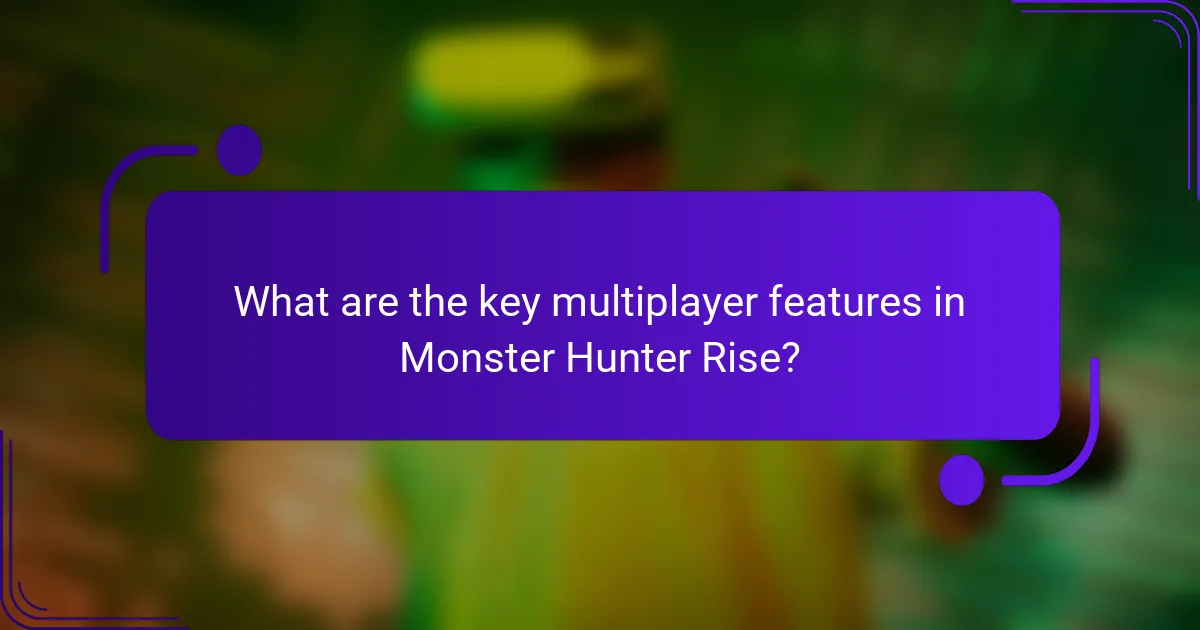
What are the key multiplayer features in Monster Hunter Rise?
Monster Hunter Rise features several key multiplayer elements that enhance the hunting experience. Players can team up with up to four hunters, utilising unique weapons and strategies to take down formidable monsters.
Cooperative gameplay allows for real-time coordination, where players can share resources and revive teammates. The game introduces the “Hunt Together” system, enabling seamless joining and leaving of hunts without disrupting ongoing sessions.
Additionally, the “Hub” system provides a social space for players to gather, trade items, and plan hunts. Unique monster encounters in multiplayer sessions may yield rare rewards, fostering collaboration and strategy among players.
Overall, these features create an engaging multiplayer environment that emphasizes teamwork and shared objectives in Monster Hunter Rise.
How does cooperative hunting enhance gameplay experience?
Cooperative hunting significantly enhances gameplay experience in Monster Hunter Rise by fostering teamwork and strategy. Players can combine their unique weapon abilities and roles to tackle powerful monsters effectively. This collaboration leads to more dynamic encounters and increases the likelihood of successful hunts. Additionally, shared resources and knowledge among players create a richer, more engaging environment. The social aspect of cooperative play also strengthens community bonds, making the overall experience more enjoyable.
Which platforms support Monster Hunter Rise multiplayer?
Monster Hunter Rise multiplayer is supported on Nintendo Switch and PC. Both platforms enable players to team up for cooperative hunts, enhancing the gameplay experience. The Switch version allows for local and online play, while the PC version offers improved graphics and performance.
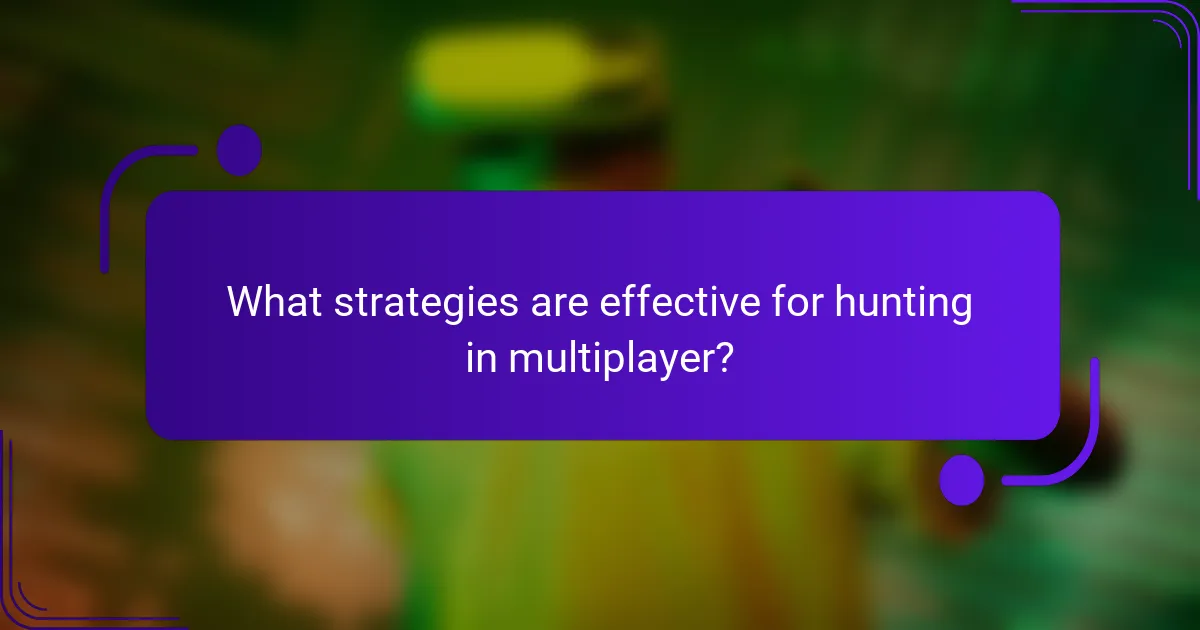
What strategies are effective for hunting in multiplayer?
Effective strategies for hunting in Monster Hunter Rise multiplayer include coordination, weapon selection, and monster targeting.
Coordinating with teammates enhances efficiency. Use voice chat or in-game signals to strategize attacks and share resources. Choose weapons that complement each other; for example, pairing ranged and melee options can cover various combat scenarios.
Targeting specific monster weak points maximises damage. Each monster has unique attributes, such as elemental weaknesses and attack patterns. Understanding these can lead to quicker hunts and successful captures.
Utilising buffs and status effects can turn the tide of battle. Weapons that inflict status ailments like paralysis or sleep can create openings for team attacks.
How can players coordinate roles during a hunt?
Players can coordinate roles during a hunt by clearly defining their responsibilities and selecting complementary weapons. Effective communication is essential for strategy execution.
Each player should choose a role based on their weapon type, such as tank, damage dealer, or support. For example, a tank can draw monster attention while damage dealers focus on attacking.
Utilising the game’s unique attributes, like the hunting horn’s buffs or the bow’s ranged attacks, enhances team synergy. Players should also adapt their strategies based on the specific monster’s behaviour and weaknesses.
Regularly discussing tactics and adjusting roles mid-hunt can lead to more successful hunts and a better overall experience.
What are the best tactics for monster tracking and engagement?
To effectively track and engage monsters in Monster Hunter Rise multiplayer, players should use a combination of tactics. Utilise the Monster Map to identify tracks and signs of monster activity. Employ tools like the Slinger to mark monsters and maintain visibility. Coordinate with teammates to set traps and use specific weapon types that exploit monster weaknesses. Timing attacks during monster movements increases engagement success. Understanding monster behaviour patterns enhances tracking efficiency.
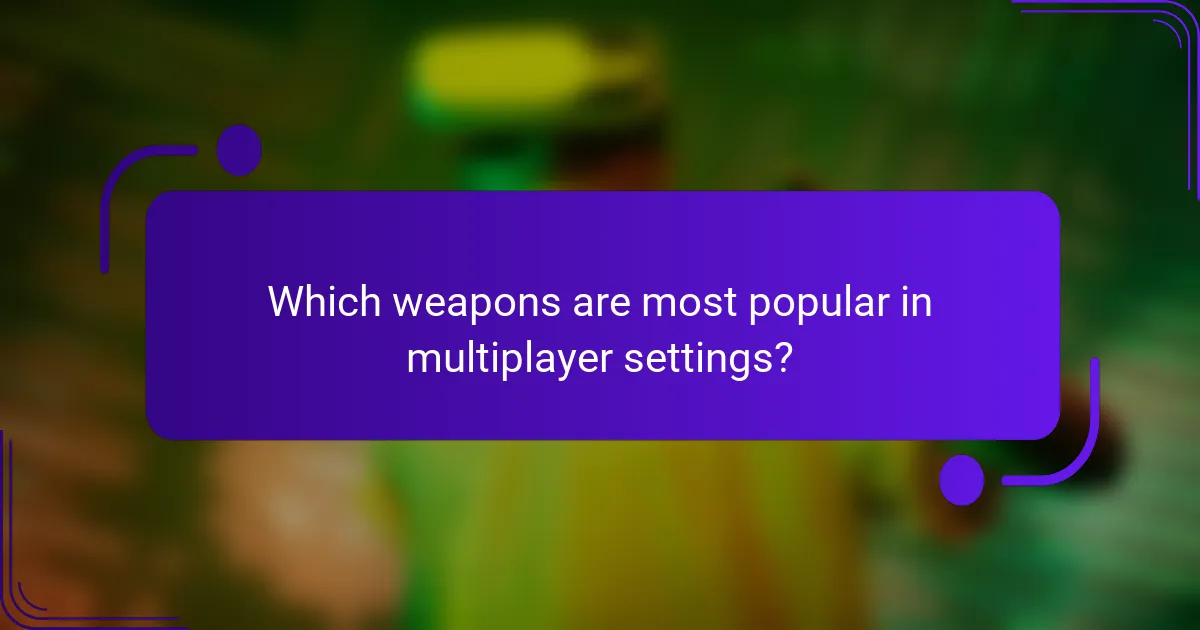
Which weapons are most popular in multiplayer settings?
In multiplayer settings of Monster Hunter Rise, the most popular weapons include the Longsword, Greatsword, Bow, and Dual Blades. Each offers unique playstyles and advantages.
The Longsword excels in mobility and counter-attacks, making it ideal for agile players. The Greatsword provides high damage output with powerful charged attacks, suited for those who prefer a slower, more deliberate approach. The Bow allows for ranged attacks, enabling players to maintain distance while dealing consistent damage. Dual Blades offer fast-paced combat with rapid strikes, appealing to players who enjoy aggressive tactics.
Understanding these weapons helps players choose based on their preferred hunting strategies and monster encounters.
What are the advantages of using melee versus ranged weapons?
Melee weapons offer close combat advantages, while ranged weapons provide distance and safety. Melee weapons excel in high damage output and quick attacks, making them effective for aggressive playstyles. Ranged weapons allow for strategic positioning and targeting from afar, enabling players to manage threats without direct confrontation. Each weapon type suits different hunting strategies, enhancing teamwork and adaptability in Monster Hunter Rise multiplayer.
How do weapon types affect team dynamics in hunts?
Weapon types significantly influence team dynamics in Monster Hunter Rise multiplayer hunts. Different weapons offer unique attributes that affect roles, synergy, and strategies among players.
For example, melee weapons like Great Swords provide high damage but require close proximity to monsters, promoting aggressive play. Ranged weapons, such as Bows, allow for safer positioning and support roles, enhancing team coordination.
The combination of weapon types can create powerful synergies. A team with a mix of melee and ranged hunters can effectively control monster behaviour, allowing for more strategic engagements. This dynamic fosters communication and tactical planning, optimising the hunting experience.
Ultimately, understanding how weapon types affect team dynamics is essential for maximising efficiency and enjoyment in hunts.
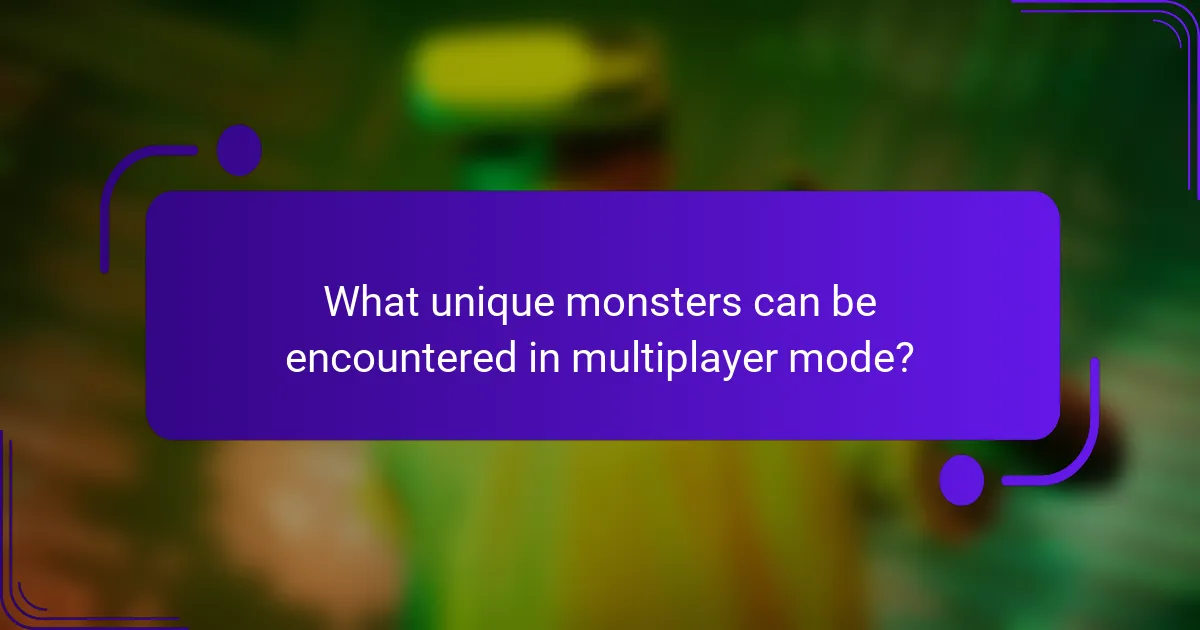
What unique monsters can be encountered in multiplayer mode?
In multiplayer mode of Monster Hunter Rise, players can encounter unique monsters such as the Magnamalo, Goss Harag, and the Almudron. Each monster presents distinct challenges and requires specific hunting strategies.
The Magnamalo is known for its explosive attacks and the ability to inflict the “Felyne” status. Goss Harag features ice-based attacks and can create ice blocks to hinder players. Almudron, a unique water-based monster, uses mud to manipulate its surroundings and create obstacles.
Understanding each monster’s attributes can enhance cooperative strategies. Players should adapt their weapon choices and tactics based on the unique behaviours and weaknesses of these monsters.
How do monster behaviors change in multiplayer encounters?
Monster behaviours become more aggressive and unpredictable in multiplayer encounters. They often target multiple hunters simultaneously, requiring coordinated strategies. Monsters may also use enhanced mobility and attack patterns, adapting their tactics based on the number of players. This change in behaviour emphasizes the need for teamwork and strategic weapon selection to effectively manage encounters.
Which monsters provide the best rewards for team hunts?
Monsters that provide the best rewards for team hunts in Monster Hunter Rise include Alatreon, Rajang, and Apex monsters. Alatreon offers rare materials for powerful weapons. Rajang drops valuable crafting items, enhancing gear upgrades. Apex monsters yield unique rewards, boosting team performance significantly.
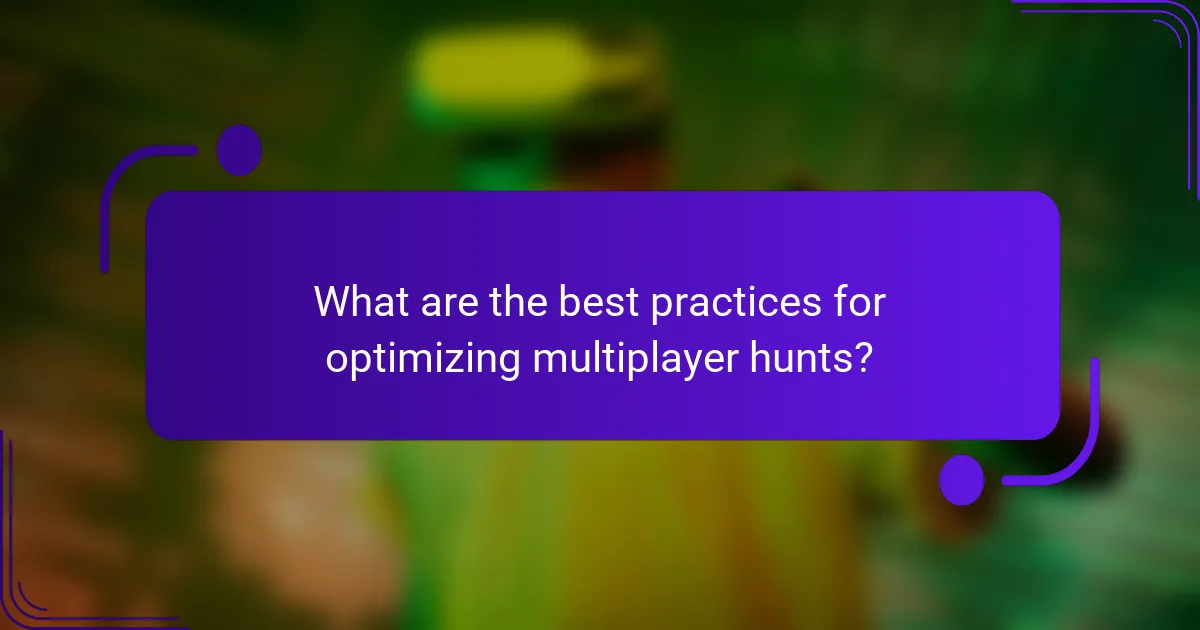
What are the best practices for optimizing multiplayer hunts?
To optimise multiplayer hunts in Monster Hunter Rise, focus on teamwork, communication, and weapon synergy. Coordinate roles among players to enhance efficiency and effectiveness during hunts.
1. Establish clear roles: Designate roles such as tank, damage dealer, and support to streamline strategies.
2. Communicate effectively: Use voice chat or quick messages to share information about monster locations and health.
3. Select complementary weapons: Pair weapons that enhance each other’s strengths, like combining ranged and melee attacks.
4. Utilise traps and items: Set traps strategically and share items to maximise damage and control during encounters.
How can players avoid common pitfalls during hunts?
Players can avoid common pitfalls during hunts by communicating effectively, preparing the right gear, and understanding monster behaviours. Effective communication ensures team coordination, allowing players to share strategies and call for help when needed. Proper gear preparation includes selecting appropriate weapons and items based on the monster’s weaknesses, enhancing overall effectiveness. Understanding monster behaviours helps players anticipate attacks and avoid unnecessary damage, leading to smoother hunts.
What expert tips can enhance team performance in Monster Hunter Rise?
Effective team performance in Monster Hunter Rise can be enhanced through clear communication, strategic planning, and optimal weapon selection. Focus on coordinating roles, such as tanking, damage dealing, and support, to maximise efficiency.
Utilise the unique attributes of each weapon type to adapt to different monsters. For example, great swords excel in dealing high damage, while bow users can maintain distance and provide support.
Prioritise monster weaknesses and target specific parts to achieve quick hunts. This approach not only increases damage output but also enables the team to gather valuable materials more efficiently.
Regularly practice and refine strategies during hunts to improve synergy and response times. As a result, teams will experience smoother gameplay and greater success in challenging quests.